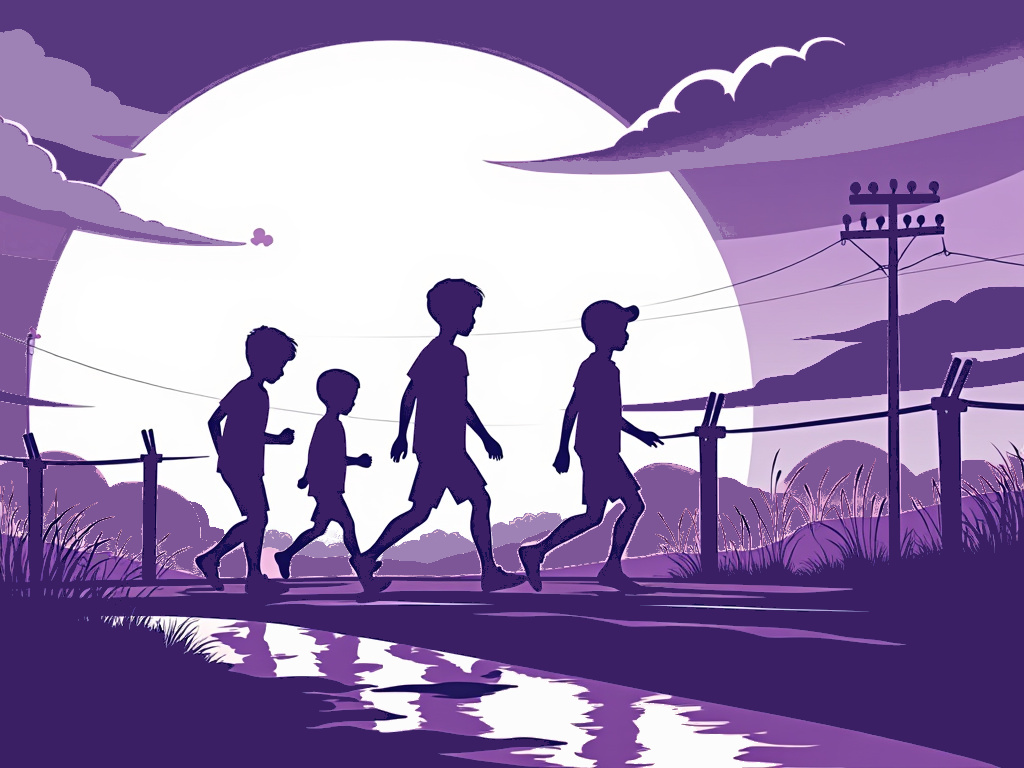Dangerous Border: Where Children Are Targeted for Abuse and Neglect

The arrival of thousands of migrants at the U.S. border has always presented a profound humanitarian and social challenge to various administrations. Over the years, policies regarding immigration have oscillated between strict and restrictive measures to more flexible and receptive approaches.
The Escalating Crisis at the Border
In recent times, the issue has gained significant importance due to a massive influx of minors, some as young as five or six years old, arriving alone in North American territory. Analysts predict that 2021 is on track to break records for the highest number of children arriving at the border daily. In March alone, Customs and Border Protection (CBP) counted approximately 18,890 children, equating to an average of 600 children per day.
But why are so many children, unaccompanied minors, arriving at the U.S. border? What motivates them to face numerous obstacles and dangers, often separating from their families and even their parents?
Migration experts point to a range of factors driving these minors from their countries of origin: violence and poverty (exacerbated by the COVID-19 pandemic), gang-related crime and warfare, natural disasters, abusive home environments, and involuntary involvement in labor or sex trafficking. Approximately 90% of them come to the U.S. to reunite with family members already residing in the country, while others, lacking such connections, hope to obtain refugee status or some form of asylum.
The Fate of Migrant Children in U.S. Custody
What happens once a child enters the United States under these conditions? Ideally, children are supposed to be transferred out of CBP custody to the Department of Health and Human Services (HHS) within 72 hours. The HHS takes responsibility for determining the future of these minors, which may include reunification with relatives or placement in foster homes. Evaluations for granting asylum are also underway, though the risk of deportation remains.
However, the sheer volume of children arriving daily has pressured the Biden administration to hastily erect improvised "shelters" along the border to house these children until HHS determines their fate—a process that can take several weeks.
Conditions in "Shelters"
Despite being labeled as "refuges," the reality in these facilities falls far short of the term. Here, children are often crowded, deprived of daily showers, and at times, without adequate food. They sleep on the floor and have limited access to recreation, comfort, or privacy. Furthermore, there's a shortage of personnel, particularly trained staff, to address these issues. Overcrowding is a common issue, with facilities often accommodating more children than they can properly handle.
For instance, one Texas Department of Homeland Security facility, designed for 250 people, is now housing over 4,000 migrants, including children and families. Some children as young as three are kept separately in small playpens with mats on the floor.
At an HHS shelter in Houston, reports reveal that girls aged 13-17 are often instructed to use plastic bags for lack of staff to accompany them to the bathrooms. Outdoor space is limited, with some girls rarely seeing sunlight, and the facility doesn't always comply with pandemic-related distancing measures.
Hygiene has become a significant concern at another facility in Donna, Texas, where children sometimes bathe only once a week, with soap occasionally running out. Communication with their parents or relatives is often restricted.
There have also been reports of sexual assault in these centers, raising further concerns about the safety and well-being of these children.
The Humanitarian Crisis and the Call for Action
The massive influx of migrant children has rapidly escalated into a humanitarian crisis. These facilities are far from suitable for a child's development, and the situation is nothing short of alarming.
It's crucial that we become aware of this dire situation, raise our voices for the protection of children's rights, and exert pressure on authorities for meaningful action. Violating the rights of these children, who escape their home countries and reach the border, is also a form of abuse. It's imperative to protect their rights and ensure their physical and mental well-being.
The indifference shown by both authorities and North American society to the welfare of these children is disconcerting. These minors are not criminals, and they deserve respect for their rights and integrity.

